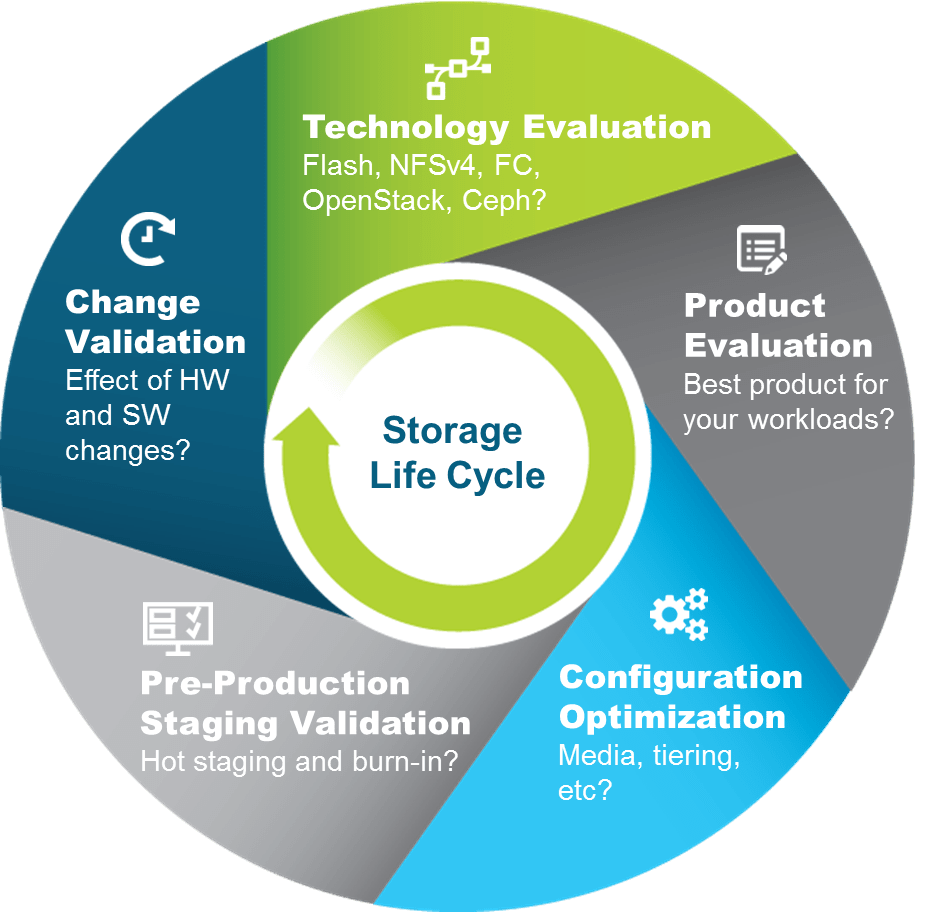Storage Solution
Today, many equipments and devices as storage resources have been produced and developed. Therefore, to purchase, design and implement storage equipment, organizations need a detailed analysis of the current situation and the extent of their future development. Today, designing and implementing a secure structure, with all availability modes consideration, and also maintaining and managing storage resources, and optimizing the implemented structures, is one of the main needs of organizations.

SAN and DAS storage equipment Comparison
about storage equipment, by implementing SANs, organizations share storage facilities between servers instead of connecting directly to servers, by storing disks and storage space together, They become aggregated and this optimizes the consumption of storage space (Storage), which optimizes the storage usage (Storage) and prevents the waste of cost and Datacenter space.
SANs are usually more efficient than DAS because of using high-speed communication such as Fiber Channel, and also SANs provide two-way communication between storage and servers to increase access, in fact, separating storage from servers reduces the server Disk management workload
centralized and easy management of storage resources
SAN is also very efficient in Backup and Disaster Recovery.by using SAN ,it is possible to back up the data of one storage to another, without any additional configuration and load on the servers, which increases the backup speed and Reduces CPU consumption on servers. Also, due to the fact that most of the existing SANs use fiber optic platform or other network protocols, it is possible to expand it in larg areas, which also allows organizations to maintain backups in a remote location.
Using a SAN simplifies many management and maintenance tasks, to the extent that it allows the organization to reduce the number of personnel stationed in the IT unit or delegate other tasks to them.rapid boot of servers from the SAN and the easy relocation of servers due to the lack of dependence on local storage resources (Storage Local), are Important features of SAN.
Substitute SAN
Before SAN entered the world of storage, DAS (Direct-Attached Storage) was the primary storage. As the name implies, they were installing directly on the server, which many organizations still use this technology because of the unaffordability of SAN. But in large organizations, it is cost-effective because of the significant benefits that SAN gives them.
For some experts, the definition of SAN and NAS is questionable, as NAS refers to Network Attached Storage (meaning a memory device that typically serves over an IP network), But SAN refers to a network of storages to which storages and servers can be connected. In fact, SAN allows disk connection to servers as Block-Level Storage, while NAS provides users with the necessary storage as File-Level Storage. Example: mail servers in organizations use SANs to store messages, contact lists, and other information, while users use NAS to store files such as Word, Excel.The operating system recognizes the SAN as a disk, while the NAS acts as a file server for the operating system.
In the technology market, these two applications are integrated, so that some SANs have a some of NAS features, and vice versa.
SAN implementation
Implementing the SAN structure in organizations requires three components: SAN Switch, Storage Device, and Server, which further requires cables and management software to communicate and manage. In fact, the developed structures consist of a large number of San Switch, Storage Device, Server and other equipment to develop SAN at the Datacenter level. SAN topology is completely dependent on the scope of work and needs of organizations.
Implementing a SAN requires steps to maintain service and stablity. The first step, designing according to the current needs of the organization and the need for future development, the second step, selecting a reputable company to provide the required hardware and software, the third step, Installation of equipment according to standards, And applying configuration to manage SAN. Implementing a SAN requires sufficient knowledge and a good view of the design, taking into account the development of the organization.
The SAN consists of a very high-speed network of storage devices, which eventually connect to the servers. SAN provides Block-Level-Storage for software running on the network. SAN storage equipment includes Tape, Disk-Based, and RAID controllers.